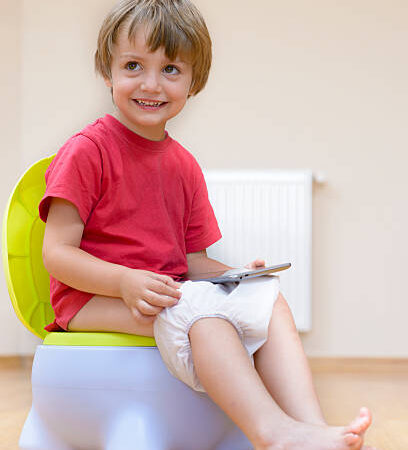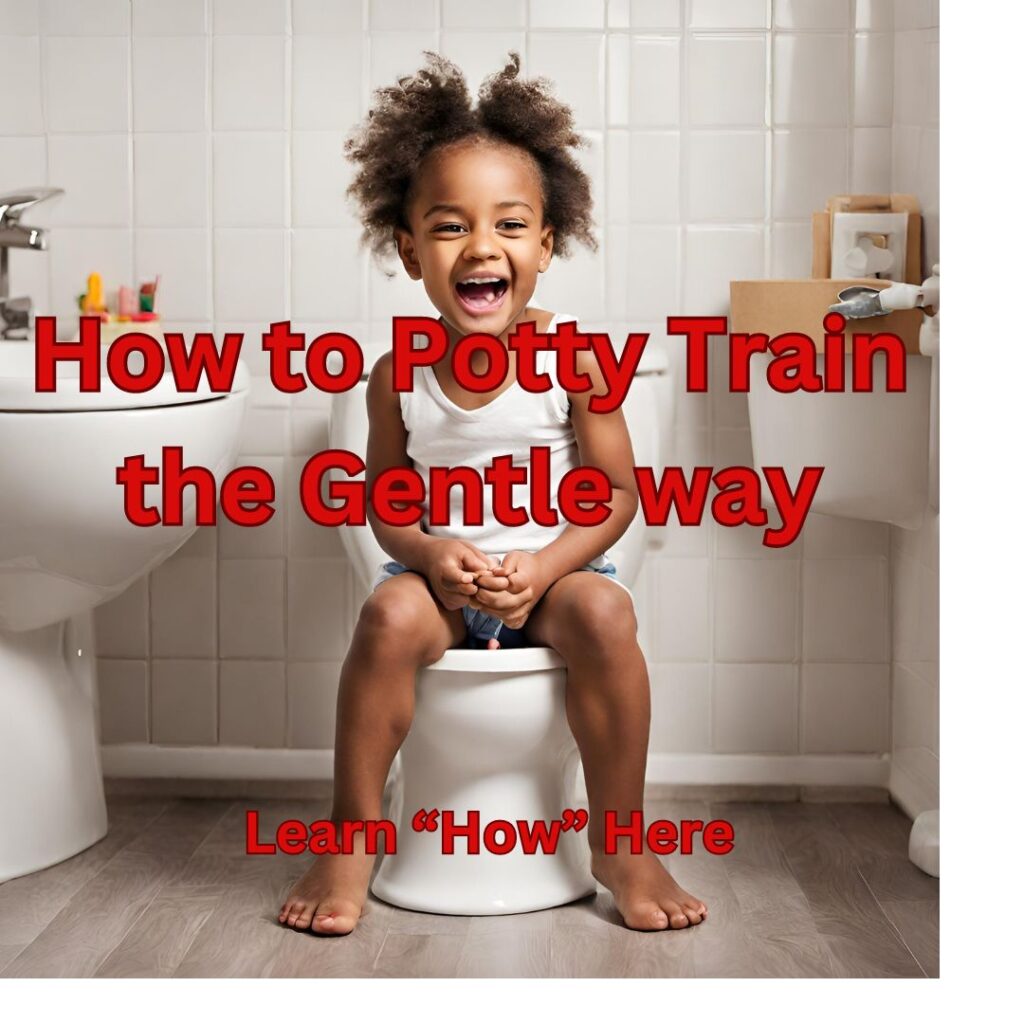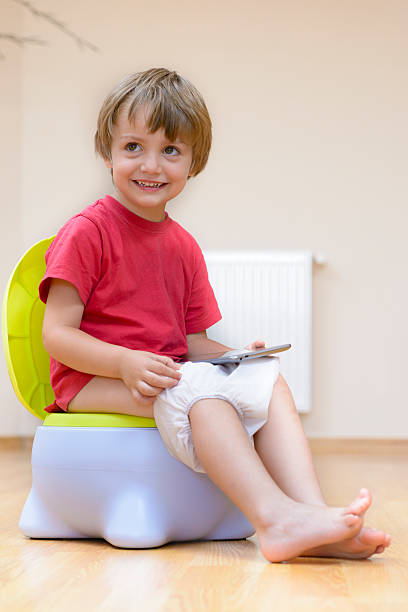
The best age to start potty training is generally between 18 and 24 months, although every child is unique and may show readiness at different times. Potty training is a crucial milestone in a child’s development as it marks the transition from diapers to using the toilet independently.
Around this age, most children start displaying signs of readiness, such as expressing discomfort with wet or soiled diapers, showing an interest in the toilet, or displaying physical readiness like staying dry for longer periods.
Potty training is not only about achieving a practical milestone but also plays a significant role in a child’s emotional and social development.
Successfully mastering this skill boosts a child’s confidence and self-esteem. Moreover, it fosters a sense of independence and accomplishment, laying the foundation for healthy emotional development. Socially, potty training allows children to participate in activities that require toileting independence, facilitating their integration into peer groups and structured environments. Overall, understanding the importance of potty training and recognizing developmental milestones is key to a successful and positive experience for both parents and children alike.
Factors Influencing the Right Age in Potty Training
The ideal age for potty training varies from child to child, and several factors contribute to determining when a child is ready to transition from diapers to using the toilet.
Physical readiness plays a crucial role, as a child needs to have developed certain motor skills and muscle control to effectively use the potty. Signs of physical readiness include the ability to walk steadily, pull down pants independently, and sit on a potty or toilet comfortably.
Understanding bladder control is another essential factor, as children need to recognize the sensation of a full bladder and respond appropriately. Additionally, the child’s ability to follow simple instructions is key, as successful potty training requires cooperation and understanding of the process. Parents should observe these factors and tailor their approach to potty training based on their child’s individual development and readiness cues.
Psychological Readiness for potty training
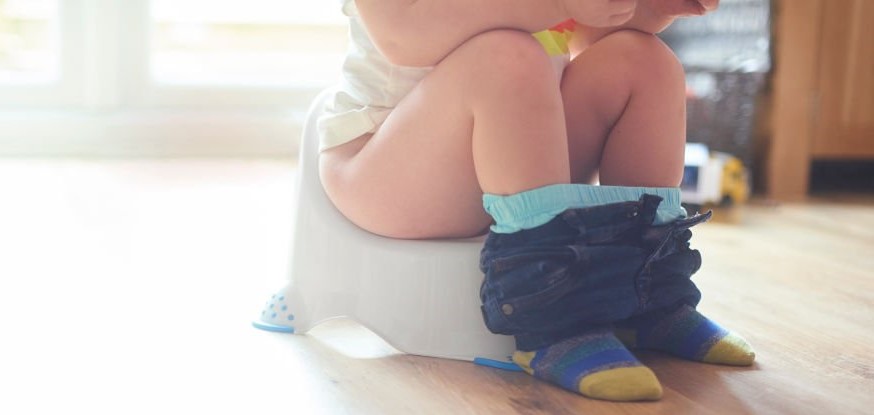
Psychological readiness is a crucial aspect of successful potty training for toddlers. Emotional preparedness involves assessing the child’s emotional state and ensuring they are ready for this developmental milestone.
Recognizing cues for readiness, such as showing interest in the bathroom or expressing discomfort with soiled diapers, helps parents determine the opportune time to start potty training.
Building a positive association with the process involves creating a supportive and encouraging environment, praising small achievements, and avoiding negative reactions to accidents. Independence and autonomy are fostered by allowing the child to participate in the process, from choosing a potty to flushing the toilet.
Encouraging a sense of control empowers the child and helps them feel more confident in their abilities. Overall, fostering self-confidence during the potty-training journey contributes to a smoother transition from diapers to using the toilet independently, setting the foundation for healthy psychological development.
Parental Readiness for Child Potty Training
Parental readiness for child potty training is crucial in ensuring a smooth and successful transition from diapers to using the toilet. First and foremost, commitment and consistency are key. Parents must be dedicated to the process and maintain a consistent approach to reinforce the child’s learning.
Establishing a regular routine helps create a sense of predictability for the child, making them more comfortable with the potty training process. It’s essential for both parents to actively participate, sharing responsibilities and providing a united front for the child.
Patience and understanding play vital roles, as every child progresses at their own pace. Dealing with setbacks is inevitable, and parents should approach them with patience and a positive attitude. Celebrating small victories, such as successful trips to the toilet, helps boost the child’s confidence and motivation, making the overall potty-training experience a positive and empowering one for both parents and the child.
Methods and Approaches for potty training
Potty training is a significant milestone in a child’s development, and various methods and approaches cater to the diverse needs of children and their families.
Child-Led Potty Training
One approach is Child-Led Potty Training, where parents allow the child to take the lead. This method emphasizes recognizing and responding to the child’s cues, fostering a sense of independence.
Scheduled Potty Training
Scheduled Potty Training, on the other hand, involves establishing a routine and setting specific times for potty breaks. This structured approach helps in creating a consistent environment for learning.
Combined Potty Training Approach
A Combination Approach blends elements of both child-led and scheduled methods, offering a flexible strategy that adapts to the child’s unique needs. By combining these approaches, parents can create a personalized and supportive environment for their child’s successful transition from diapers to using the toilet.
Common Challenges and Solutions in potty training
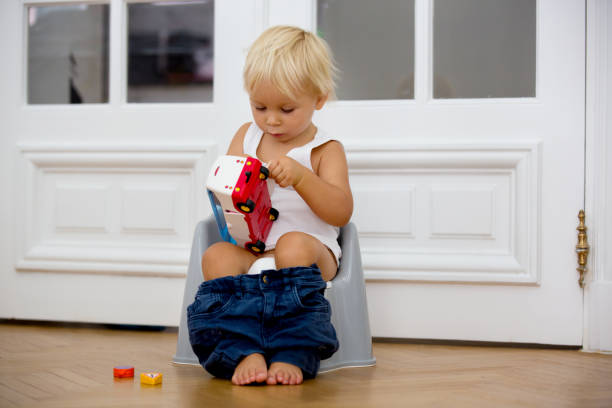
Potty training often comes with common challenges that parents face. One challenge is resistance and regression, where a child may resist using the potty or revert to previous behaviors. Identifying the causes of resistance, such as fear or discomfort, is crucial. Strategies to address regression involve patience, reassurance, and maintaining a consistent routine.
Accidents and clean-up are inevitable during this process. Positive reinforcement after accidents helps encourage the child to keep trying. Creating a supportive environment with easy access to the potty and child-friendly facilities also aids in successful training.
Nighttime potty training poses its own set of challenges, requiring a transition from daytime to nighttime dryness. Bedwetting solutions and tips include limiting fluids before bedtime, using waterproof bedding, and implementing a consistent bedtime routine. With patience, understanding, and a positive approach, parents can navigate these challenges and guide their child through successful potty training.
Celebrating Milestones in potty training
Celebrating milestones in potty training is a pivotal and joyous moment in a child’s development, marking a significant step towards independence and self-care. Reinforcing positive behavior is key during this journey, and parents often employ positive reinforcement techniques to encourage their child’s progress.
Creating a reward system adds an element of excitement and motivation, allowing the child to associate successful potty experiences with positive outcomes. As the child achieves milestones, such as using the potty independently, parents gradually promote their independence by transitioning from constant assistance to fostering self-care habits.
This process is not just about achieving dryness but also about instilling a sense of responsibility and accomplishment in the child, fostering a positive and confident attitude as they navigate this important developmental stage.
Conclusion
In conclusion, recognizing and embracing the individuality of each child is paramount in the journey of potty training. As caregivers and parents, it is essential to understand that every child develops at their own pace, both physically and emotionally.
Rather than adhering to a one-size-fits-all approach, emphasizing the uniqueness of each child’s temperament, preferences, and readiness for potty training can lead to more successful and less stressful experiences for both the child and the caregiver. Furthermore, fostering a positive and patient approach to potty training is key to creating a supportive environment. Encouraging a sense of autonomy and celebrating small victories can contribute to a child’s confidence and willingness to participate in the process.
By maintaining a positive attitude and exercising patience, caregivers can navigate the challenges of potty training with understanding, compassion, and ultimately, success.Top of Form
